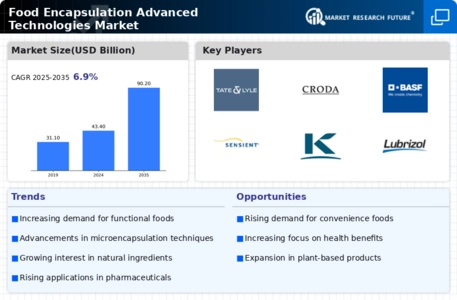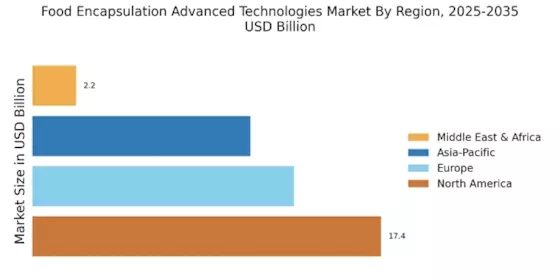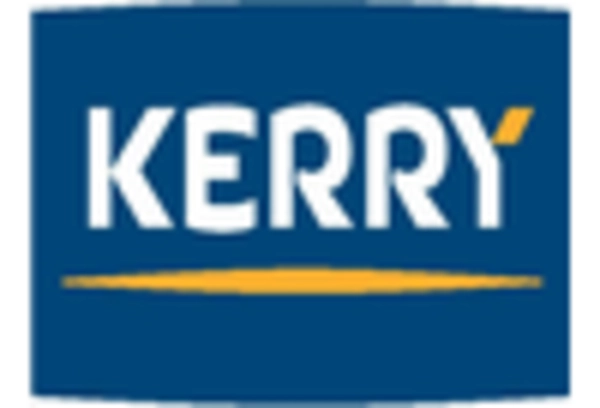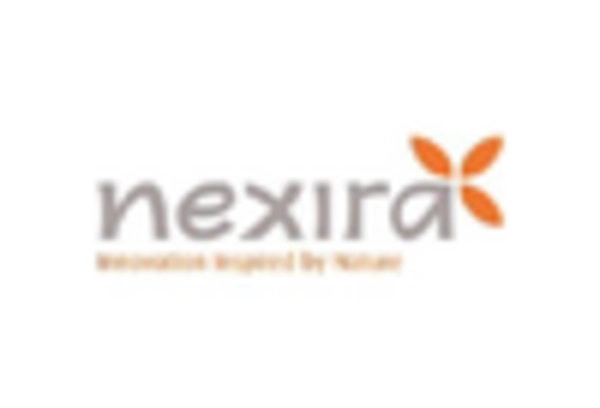Innovations in Food Preservation
Innovations in food preservation techniques are significantly influencing the Food Encapsulation Advanced Technologies Market. Encapsulation methods, such as microencapsulation and nanoencapsulation, are increasingly utilized to extend the shelf life of food products while maintaining their nutritional value and sensory attributes. This is particularly relevant in the context of perishable goods, where encapsulation can prevent spoilage and enhance stability. The market for food preservation technologies is projected to grow, with estimates indicating a potential increase of over 10% annually. As manufacturers seek to reduce food waste and improve product longevity, the Food Encapsulation Advanced Technologies Market is poised to benefit from these advancements.
Regulatory Support for Food Safety
Regulatory support for food safety is emerging as a critical driver for the Food Encapsulation Advanced Technologies Market. Governments and regulatory bodies are increasingly emphasizing the importance of food safety standards, which has led to the adoption of advanced technologies in food processing and preservation. Encapsulation techniques are recognized for their ability to enhance food safety by protecting sensitive ingredients from degradation and contamination. This regulatory landscape is expected to foster innovation and investment in encapsulation technologies, with market projections indicating a potential growth rate of 8% annually. As food safety remains a priority, the Food Encapsulation Advanced Technologies Market is likely to thrive under supportive regulations.
Increasing Demand for Nutraceuticals
The Food Encapsulation Advanced Technologies Market is experiencing a notable surge in demand for nutraceuticals, driven by a growing awareness of health and wellness among consumers. This trend is reflected in the increasing consumption of dietary supplements and functional foods, which are often enhanced through encapsulation techniques. The market for nutraceuticals is projected to reach substantial figures, with estimates suggesting it could exceed USD 300 billion by 2025. Encapsulation technologies play a crucial role in protecting sensitive ingredients, improving bioavailability, and ensuring targeted delivery, thereby enhancing the overall efficacy of these products. As consumers seek products that offer health benefits, the Food Encapsulation Advanced Technologies Market is likely to expand in response to this demand.
Rising Interest in Personalized Nutrition
The rising interest in personalized nutrition is significantly impacting the Food Encapsulation Advanced Technologies Market. As consumers become more aware of their individual dietary needs, there is a growing demand for tailored food products that cater to specific health goals. Encapsulation technologies enable the delivery of customized nutrients and bioactive compounds, enhancing the effectiveness of personalized nutrition solutions. Market Research Future suggests that the personalized nutrition market could reach USD 11 billion by 2026, indicating a robust growth trajectory. This trend presents opportunities for the Food Encapsulation Advanced Technologies Market to innovate and develop products that meet the diverse needs of health-conscious consumers.
Consumer Preference for Clean Label Products
The shift towards clean label products is a significant driver for the Food Encapsulation Advanced Technologies Market. Consumers are increasingly demanding transparency in food labeling, favoring products that contain natural ingredients and minimal additives. Encapsulation technologies can facilitate the inclusion of natural flavors, colors, and preservatives without compromising product integrity. This trend is reflected in market data, which indicates that clean label products are expected to account for a substantial share of the food market, potentially reaching USD 180 billion by 2025. As manufacturers adapt to these consumer preferences, the Food Encapsulation Advanced Technologies Market is likely to see increased adoption of encapsulation methods that align with clean label principles.


















Leave a Comment